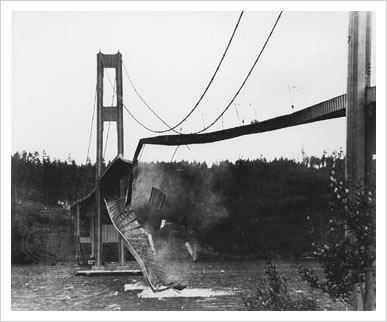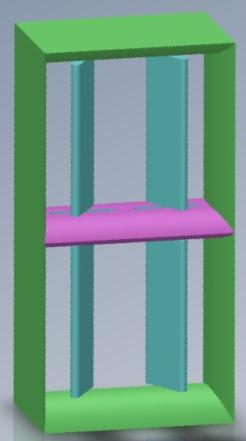ResHydro's Hydrokinetic Contraphase Resonator (HCR) is based on the phenomenon of flutter, a powerful and natural oscillatory phenomenon, until now known principally as a highly destructive force capable of tearing apart aircraft, bridges and other structures.
The ResHydro HCR system induces and maintains flutter in all flow conditions, operating continuously at the point of resonance. This ensures that it always extracts the maximum amount of energy from a given flow, regardless of water velocity.
No competing technology can do this.
 |
Our proprietary HCR consists of three primary components that together induce and maintain flutter to derive more electricity than any other hydrokinetic device.
The HCR does not require external energy to operate other than water flow. To read more about flutter and resonance, click here. |
|
An attribute of any mechanical object, system or structure is a "natural frequency" of vibration, determined by the object's mass, elasticity, geometry, temperature and ambient conditions. When a pulse of energy is applied to such a system or structure, it will vibrate at its natural frequency. This induced vibration will gradually die out through energy losses from external damping, and from internal stresses and friction, finally emerging as heat.
An example of the above is the ringing of a bell. Once struck, the bell continues to vibrate at its natural frequency until the initial striking energy has dissipated. When sufficient energy is applied to the bell as a continuing series of pulses or strikes, the bell's vibration, at its natural frequency, will continue indefinitely. When the above series of pulses is at the same frequency as the bell's natural frequency, then the bell is said to be in resonance with the energy source, at which point less energy is required to keep the bell vibrating than at any other frequency.
Hence, the maximum transfer of energy between an energy source and a vibrating mechanical object or structure occurs at resonance, when the source energy frequency is the same as the object's natural frequency. That is, the efficiency of energy transfer becomes a maximum at the point of resonance.
Flutter is a powerful natural phenomenon related to resonance. Flutter is formally defined as the self-excited resonant oscillation of a structure in a fluid flow. Such self-sustaining vibration induced in a structure immersed in a moving fluid can occur only when certain conditions are met, and will, if not sufficiently damped, rapidly increase in intensity until the structure is destroyed.
Only structures meeting certain criteria have the ability to flutter. One of these prerequisites is that the structure have two degrees of freedom (rotational and translational). By controlling the two other criteria, the inertia (mass) and elasticity (stiffness) of the HCR, flutter can be induced and maintained.





